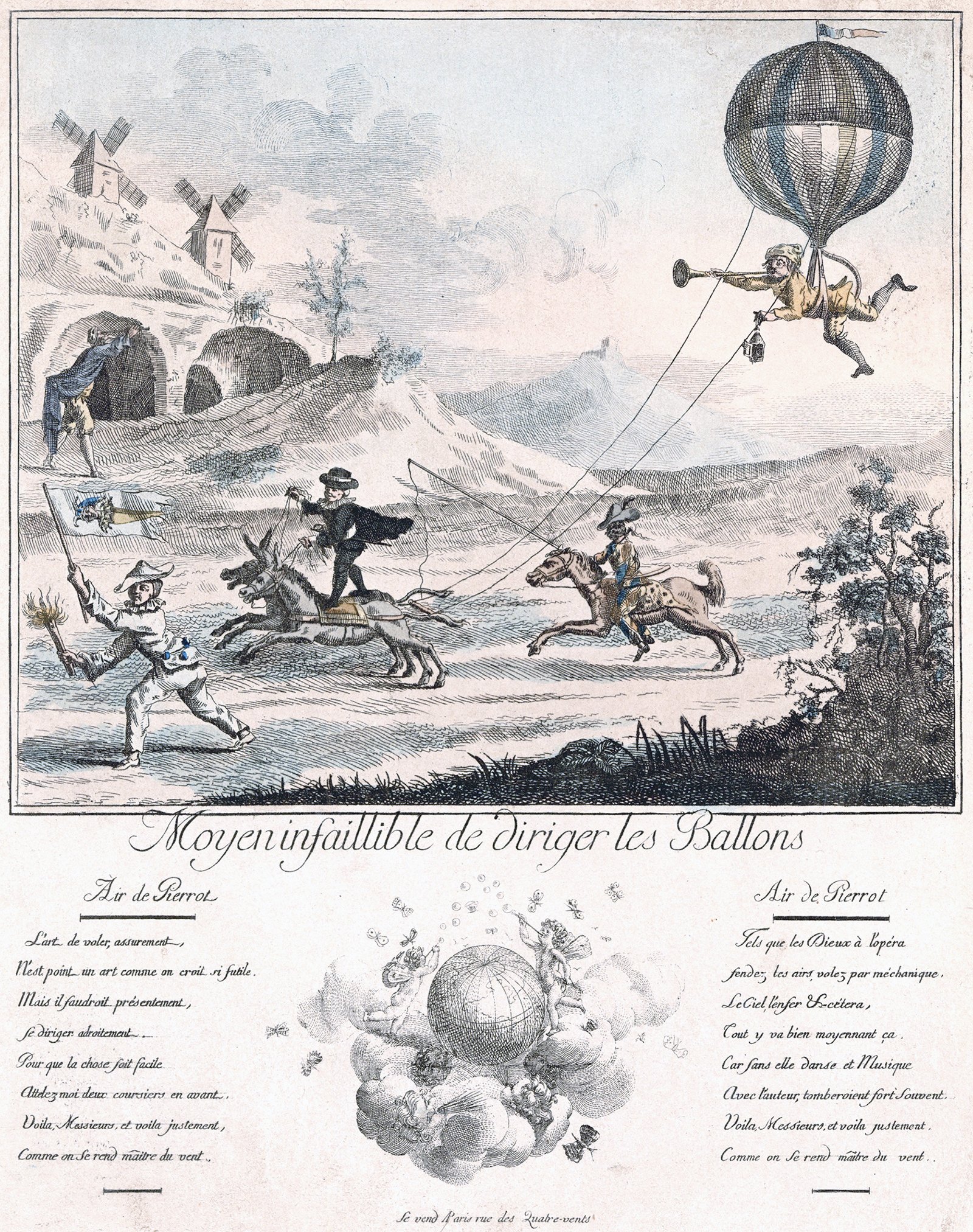A Foolproof Way to Direct the Balloons
Illustration from 1787 called Moyen Infaillible de Diriger les Ballons, or A Foolproof Way to Direct the Balloons. It was a satirical take on ballooning at the time.
The above illustration shows a comical scene involving a man suspended from a balloon being pulled by a pair of horses. It was drawn in 1787 and it’s titled Moyen Infaillible de Diriger les Ballons, or A Foolproof Way to Direct the Balloons. It’s meant to be a satirical take on ballooning at the time, when flight was front-and-center on the public stage. The characters in the scene are from commedia dell'arte, which is a type of theatre with recurring archetypal characters. The characters shown here are Pierrot, who wears a white costume and carries a flag and torch. The second is Il Dottore, or The Doctor, who wears a black costume and rides a pair of horses that pull a balloon. The third is Harlequin the Zanni, with a suit of colorful diamond patterns and a black mask, riding behind the doctor with a pole-like object. The fourth character, suspended below the balloon, is possibly Il Capitano, or The Captain, but this is unclear from what we’re shown.
The scene itself gives us some clues about the artist’s intent. First, it’s fairly clear the group is trying to draw attention to themselves. The man suspended below the balloon is blowing a trumpet, while Pierrot is waving a flag and carrying a torch. Also, the horses are running which means the group is traveling quickly. This is most likely a commentary on the fanfare surrounding a balloon launch at the time. This was a few years after the Montgolfier Brothers made their famous flight, and the public was going crazy for anything balloon-related. The title also gives us some insight into the artist’s intent. By using the term foolproof, there’s a sense of salesmanship going on here. It’s as if the artist is saying all you have to do is fly a balloon and draw attention to yourself, and the public will flock to you. This makes sense because balloon flights at the time were popular events that commonly draw large crowds.
Satire is always interesting because it gives us a window into a culture and the public perceptions of a certain timeframe. What we have here is a reaction to how popular ballooning was at the time. The artist was saying that anything involving a balloon and a bit of fanfare was a foolproof way to attract a crowd.
Check out other ideas for flying machines throughout history here.

